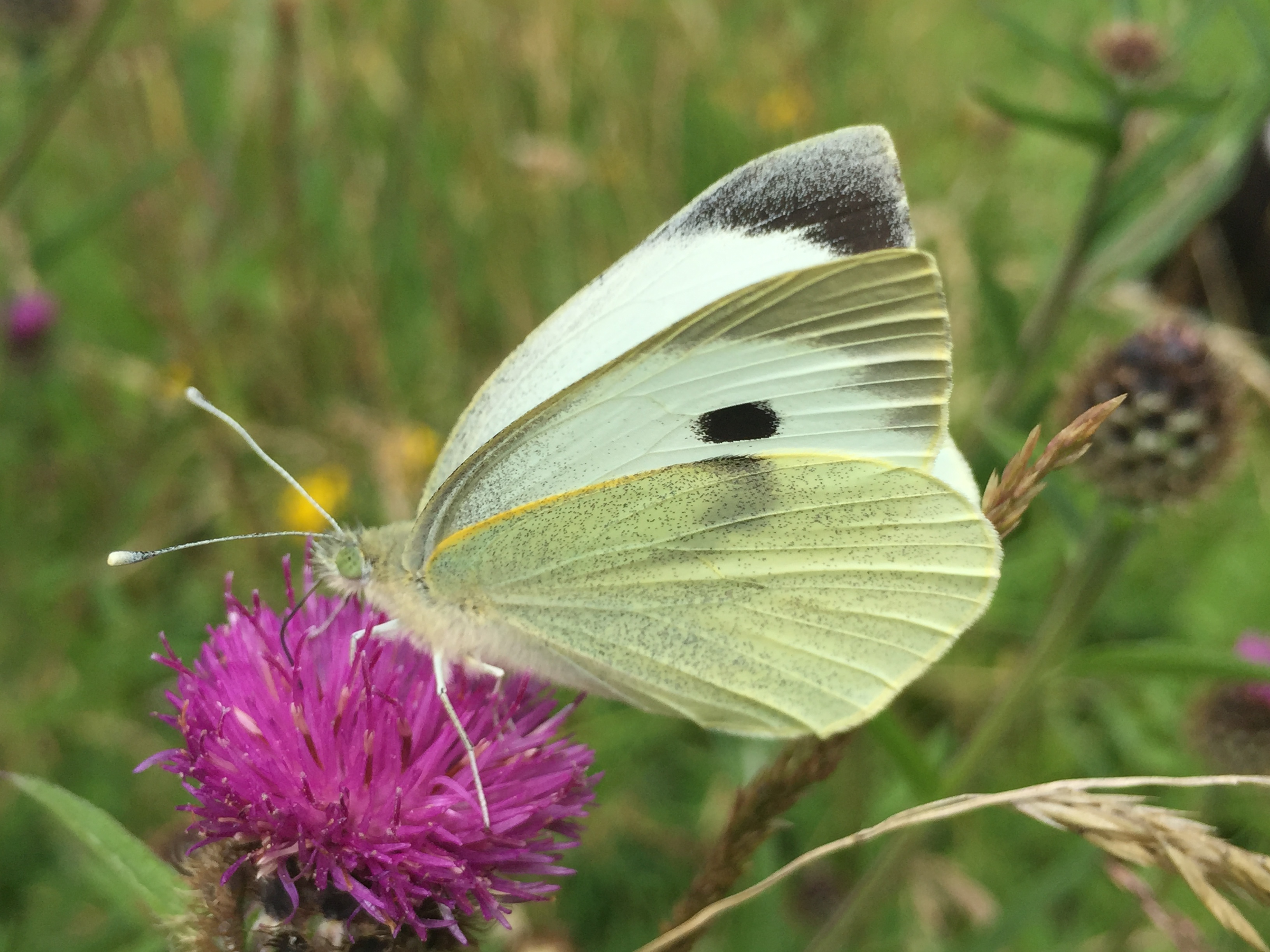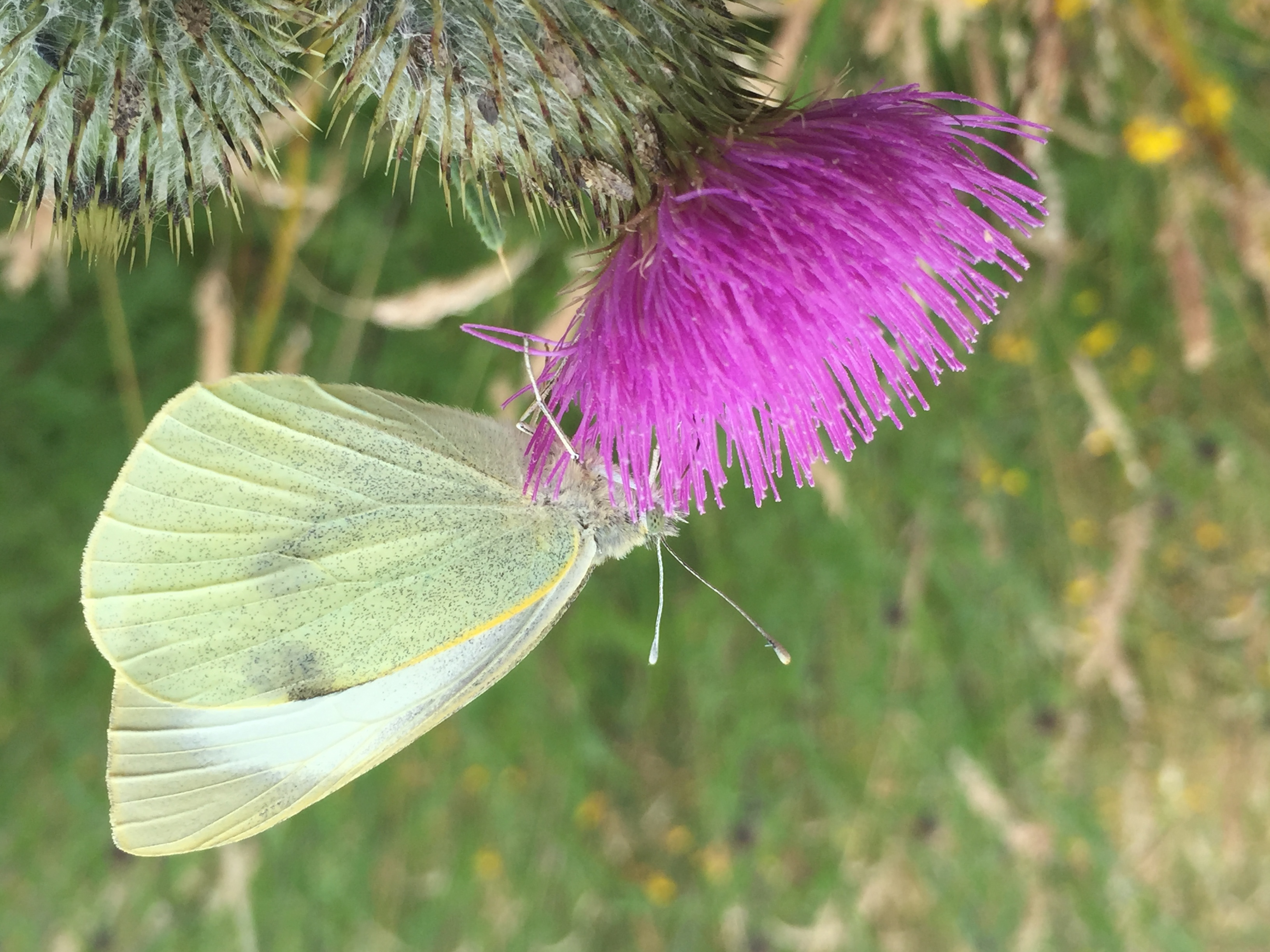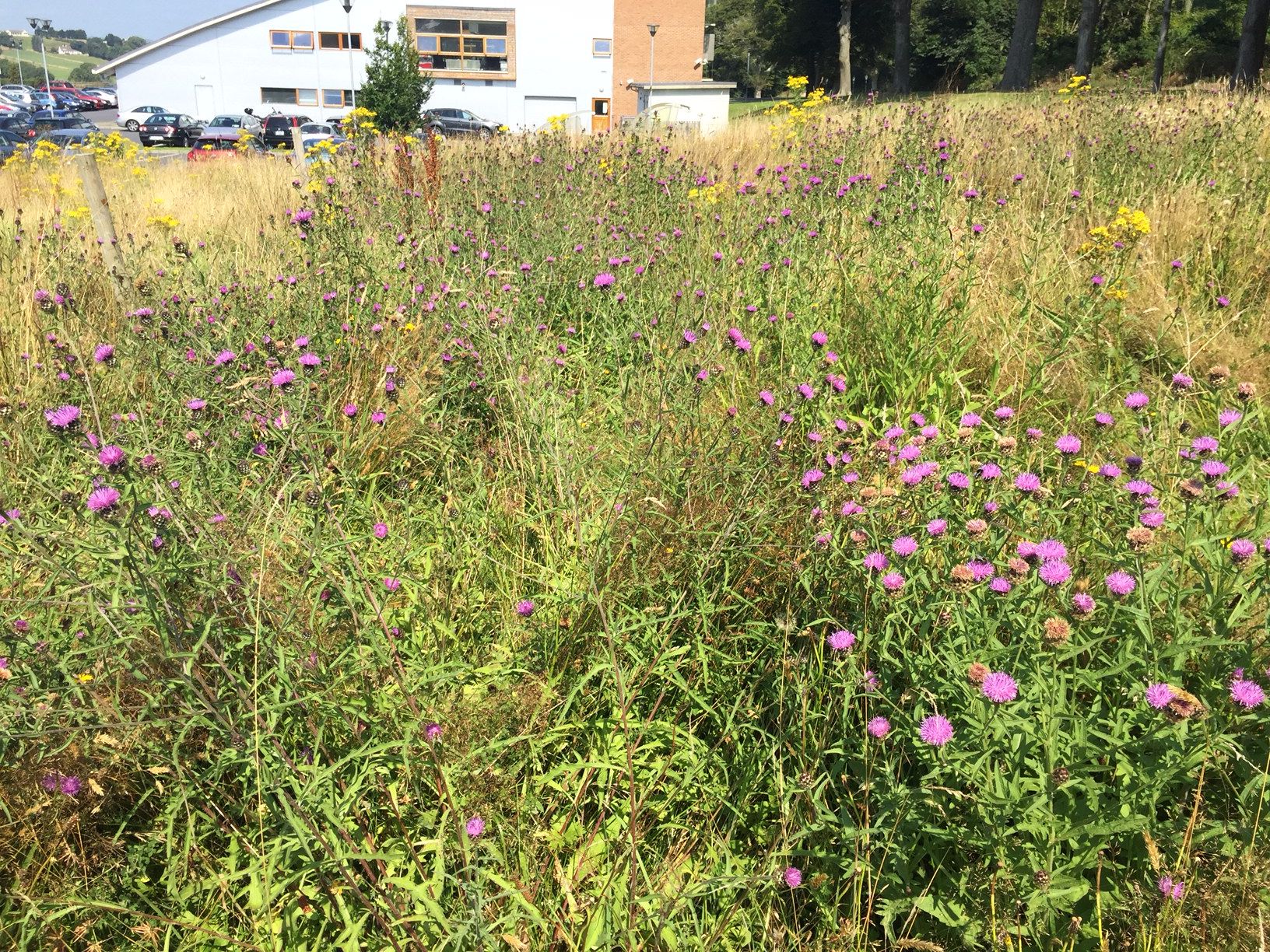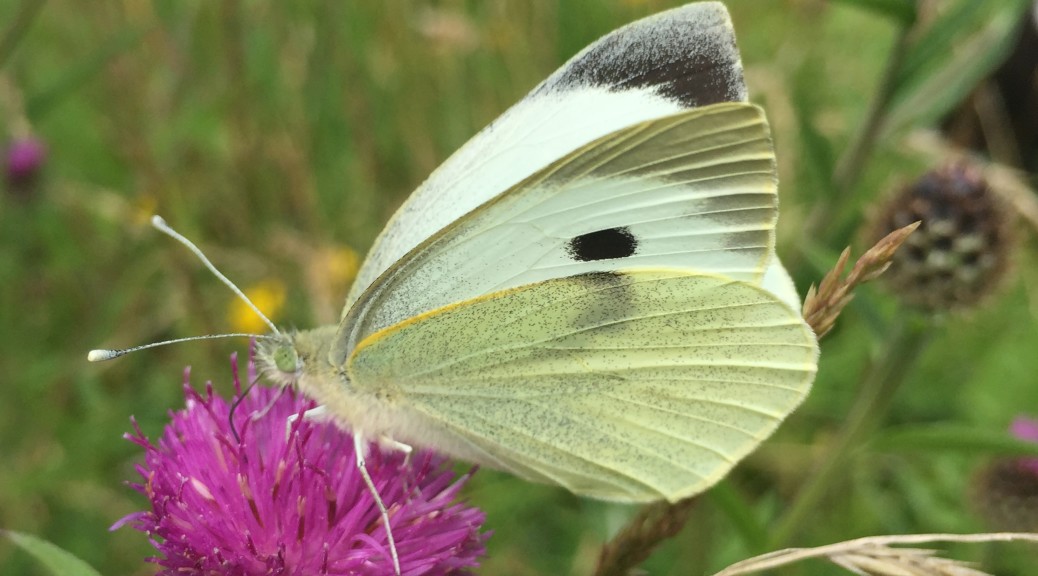
Gardeners, as a rule, are gentle nature-loving people, but this trait is often strained when mention is made of the cabbage whites. For together with slugs, carrot fly and greenfly, cabbage whites are the bane of their lives, working hard to undo the benefits of the gardener’s toil. And as the name suggests, they adore cabbage and other brassicas and will travel far and wide to search them out. Once located, they lay their eggs on the underside of leaves and upon emergence the larvae, if left unchecked, will set about busily devouring all around them. Hardly any wonder, therefore, that cabbage whites are very commonly found in gardens, in both urban and rural settings, and clouds of them can be seen on fields of oil seed rape, particularly where it was decided to eschew the use of insecticide.
Two different species, the large white and small white, comprise the cabbage whites. Freshly emerged both have a lovely neat appearance, their underwing suffused with pale yellowish-green and fine dark speckles, and a forewing ink-spot partly obscured by the hindwing. As the name suggests, most large whites are appreciably larger than their smaller cousins, but a word of caution, the difference in size is not always apparent. The caterpillars of the small white are all green and masters of disguise, mind you, the green and yellow patterned caterpillars of the large white are also surprisingly hard to spot.

This has been a very poor year for butterflies generally; exactly how poor it is too early to say. I have gone for many a walk this summer looking for butterflies, only to return home pondering why so few were seen. The only butterflies to buck this trend, to my mind, were the cabbage whites. In early July when the second generation emerged, I began to see them in good numbers. At first it was the small white appearing more regularly in and around our garden. Then I noticed more and more large white passing the office window, flying by as if on important business elsewhere. The second generations at this time of year are fortunate to have the nectar-rich flowers of knapweed and thistles upon which to feed, two plants that any gardener should be happy to have growing in their garden. The knapweed-rich uncut meadow at the Data Centre provided me ample opportunity to photograph both species, so they provided little challenge.
Speckled wood #1, Dingy skipper #2, Wall brown #3, Common blue #4, Holly blue #5, Small blue #6, Meadow brown #7, Ringlet #8, Wood white #9, Cryptic wood white #10, Orange-tip #11, Green-veined white #12, Large white #13 & Small white #14.


